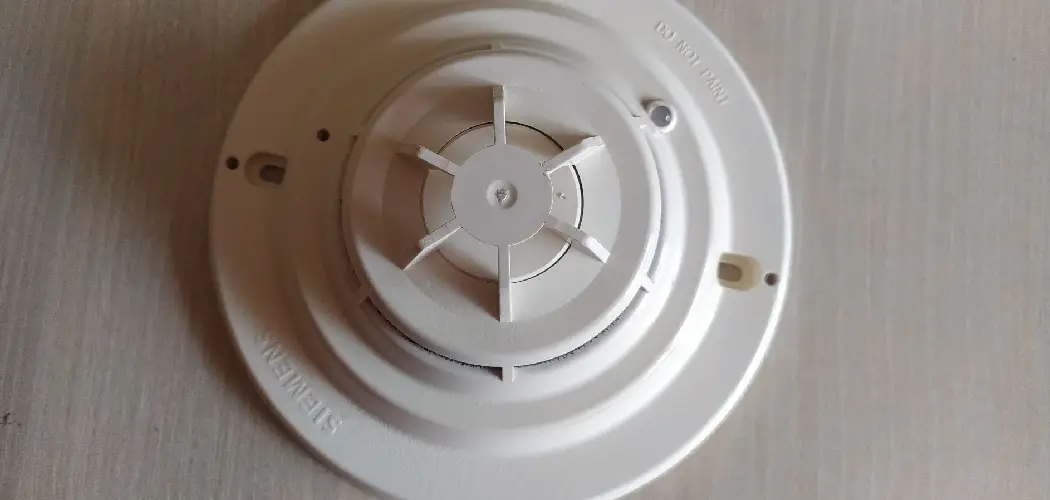Testing your First Alert smoke alarm is a critical step in maintaining a safe and secure home environment. A functioning smoke alarm provides early warning of potential fire hazards, giving you and your family valuable time to evacuate and seek safety.

In this guide, we’ll explore the importance of how to test first alert smoke alarm regularly and walk you through the simple steps to ensure its proper operation. From understanding the different types of smoke alarms to knowing when and how often to test them, we’ll cover everything you need to know to keep your home protected.
By taking proactive measures to test your smoke alarm, you can rest assured that your family and property are well-prepared in the event of a fire emergency.
Importance of Regular Testing for Smoke Alarms
Regular testing of smoke alarms is not just a recommended practice; it’s a crucial component in ensuring the safety and well-being of everyone in your household. Smoke alarms play a lifesaving role by detecting smoke and fire early, allowing for prompt evacuation and response before the situation escalates. However, like any electronic device, their functionality can deteriorate over time due to factors such as dust accumulation, aging, or battery depletion.
Consequently, without regular maintenance and testing, there’s a risk that the smoke alarm may fail to operate in the event of an actual fire, putting lives and property at substantial risk. Testing your smoke alarm monthly is a simple yet effective measure to guarantee that it is always in working order and can perform its critical job when you most need it. This habitual check ensures that any malfunctions are identified and resolved promptly, maintaining continuous protection for your home and loved ones.
Features and Benefits of First Alert Smoke Alarms
First Alert smoke alarms are equipped with a variety of features designed to offer enhanced protection, ease of use, and reliability. An essential feature is their ionization and photoelectric sensors, which provide comprehensive fire detection. Ionization sensors are particularly effective at detecting fast-flaming fires, while photoelectric sensors excel in identifying slow-burning, smoky fires. This dual-sensor technology ensures a wide range of fire types can be detected promptly.
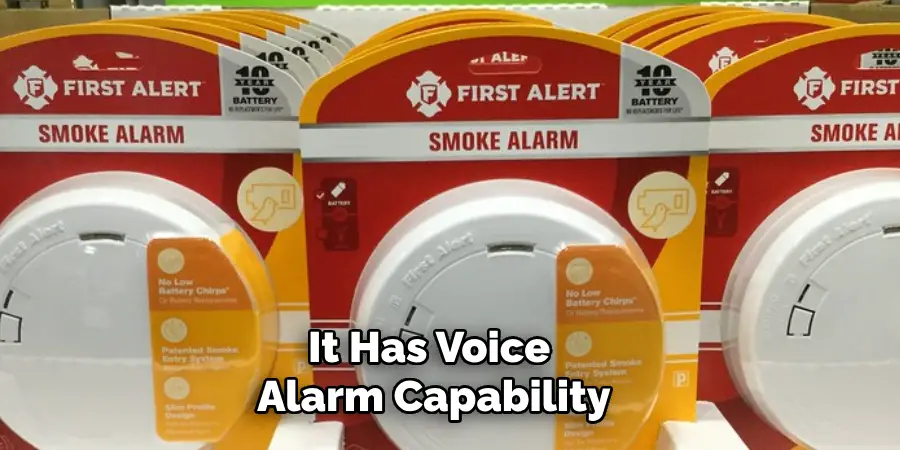
Another significant benefit of First Alert smoke alarms is their voice alarm capability. This feature provides a clear, verbal warning in addition to the traditional siren, specifying the nature of the emergency (smoke or carbon monoxide) and its location within the home, if you have interconnected alarms. This can be crucial in providing specific guidance for evacuation, especially in larger homes or for families with children.
The inclusion of a 10-year sealed battery in some First Alert smoke alarm models eliminates the need for battery replacements for the life of the alarm. This not only offers convenience but also ensures that the smoke alarm is always ready to function, reducing the risk of it being disabled due to a dead battery.
Furthermore, First Alert smoke alarms are designed with an easy-to-use test button, simplifying the monthly testing procedure. Regular maintenance is further supported by smart technology in some models, which can send status updates and alerts to your smartphone, keeping you informed about your smoke alarms’ functionality even when you’re not at home.
Taken together, the features of First Alert smoke alarms—comprehensive fire detection, voice alerts, long-term battery life, and smart connectivity—provide an unmatched level of safety and convenience, ensuring peace of mind for homeowners concerned about fire safety.
Understanding First Alert Smoke Alarms
To fully benefit from the features and capabilities of First Alert smoke alarms, it’s essential to understand their operation and the technology behind them. First Alert utilizes advanced detection technologies to offer early warnings for different types of fires. The key to this effectiveness lies in the combination of ionization and photoelectric sensors, allowing the alarm to quickly identify both fast-burning fires, which produce little smoke but large flames, and slow-smoldering fires, which may smolder for hours before bursting into flame.
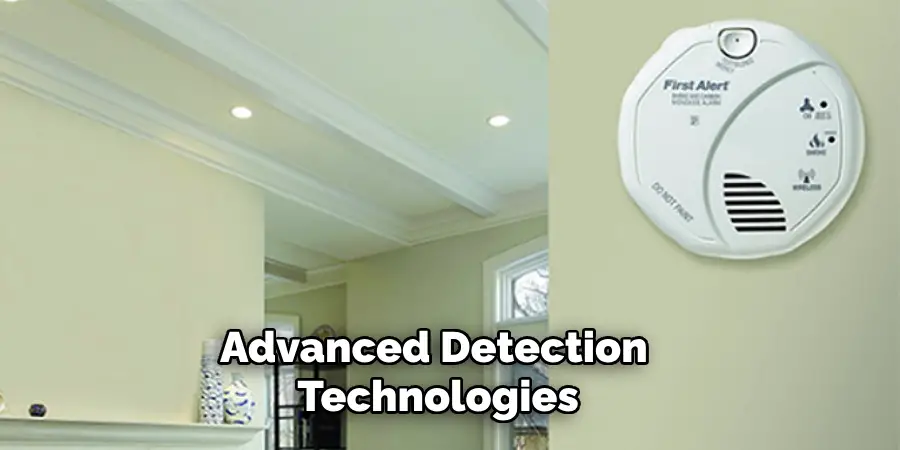
Understanding the operational modes of your First Alert smoke alarm is equally important. The majority of models operate on a 24/7 basis, monitoring the air in your home for signs of smoke or fire. When smoke is detected, the alarm’s siren will sound, a piercing noise designed to alert everyone in the household. If your model includes a voice alarm system, it will also announce the type of danger and its location, if you have a network of interconnected alarms.
Maintenance is another critical aspect of ensuring your First Alert smoke alarm continues to operate effectively. This includes regular testing, as outlined in the guide, and cleaning according to the manufacturer’s instructions to prevent false alarms caused by dust or spider webs.
By understanding how your First Alert smoke alarm works and adhering to a regular maintenance schedule, you can ensure that you and your family have reliable protection against the dangers of fire.
Components and Features of First Alert Smoke Alarms
Each First Alert smoke alarm is constructed with a suite of components and features designed to maximize its effectiveness in detecting fires and alerting occupants. At the core of these alarms are the ionization and photoelectric sensors, serving as the first line of defense against fires. The ionization sensor quickly detects fast-burning fires, while the photoelectric sensor is more responsive to smoldering fires that produce a large amount of smoke.
A notable feature of many First Alert models is the voice alarm function. This advances beyond the traditional loud beeping sound, offering specific verbal warnings that identify the type of danger and its location within the home. This is especially beneficial in interconnected systems, where it can direct occupants more precisely toward safer exit routes.
The inclusion of a 10-year sealed battery in select models addresses the common issue of alarm disfunction due to battery failure. By providing a decade-long lifespan without the need for battery replacement, these alarms offer continuous protection and reduce the risk of being inadvertently left unpowered.
For ease of use and maintenance, First Alert smoke alarms come with a simple, accessible test button. This allows homeowners to quickly verify the alarm’s operational status and ensure it is ready to respond in an emergency. Additionally, advanced models feature smart technology capabilities, enabling the alarm to connect to a home Wi-Fi network and send alerts and status updates to a smartphone app. This smart connectivity brings a new level of convenience and reassurance to smoke alarm monitoring, keeping homeowners informed and prepared, even when they’re away.

Overall, the components and features of First Alert smoke alarms—ranging from advanced sensor technology and voice alerts to long-life batteries and smart connectivity—are designed with the sole purpose of providing unrivaled fire safety and peace of mind to individuals and families.
Importance of Regular Testing
Regular testing of your First Alert smoke alarms is a crucial component of maintaining your home’s safety and ensuring your alarms are in optimal working condition. Testing should be conducted according to the manufacturer’s guidelines, typically on a monthly basis, to verify that both the sensors and the alarms are functioning correctly. This simple yet vital action can be the difference between a minor incident and a catastrophic loss, as functional alarms provide the earliest possible warning of a fire, allowing for swift evacuation and response.
Furthermore, regular testing helps identify any alarms that may have malfunctioned or are nearing the end of their operational life, ensuring that all units are reliable and effective at all times. Homeowners should also consider the testing as an opportunity to familiarize themselves with the sound of their alarms, including the distinct sounds for different types of alerts if their system has this capability. This knowledge can significantly enhance the likelihood of an appropriate and timely reaction in the event of an actual fire.
The Critical Role of Routine Smoke Alarm Testing
The significance of routine testing for First Alert smoke alarms cannot be overstated. Regular testing acts as a proactive measure, ensuring the functionality and effectiveness of the smoke alarms at all times. This is crucial because smoke alarms are often the first line of defense in the event of a fire, offering early warnings that can save lives and minimize property damage. Testing ensures that both the alarm sound and detection mechanisms are working as intended, which is essential for the safety of all occupants within a home.
In addition to safeguarding against potential technical failures, regular testing also promotes a heightened awareness of fire safety among household members. This awareness is critical for preparing individuals to act swiftly and confidently in the event of an actual fire.
By familiarizing occupants with the alarm sounds and the proper procedures for evacuation, routine testing contributes to a more informed and prepared household. Xunitly, through consistent and regular testing, homeowners not only maintain their smoke alarms in prime condition but also reinforce the overall safety culture within their homes, further embedding fire safety practices into their daily lives.
10 Methods How to Test First Alert Smoke Alarm
1. Read the User Manual:
Start by familiarizing yourself with the user manual provided with your First Alert smoke alarm. The manual contains important information about the specific model of your alarm, including instructions for testing, maintenance, and troubleshooting. Refer to the manual to understand the recommended testing procedure and any unique features or requirements of your smoke alarm.
2. Locate the Test Button:
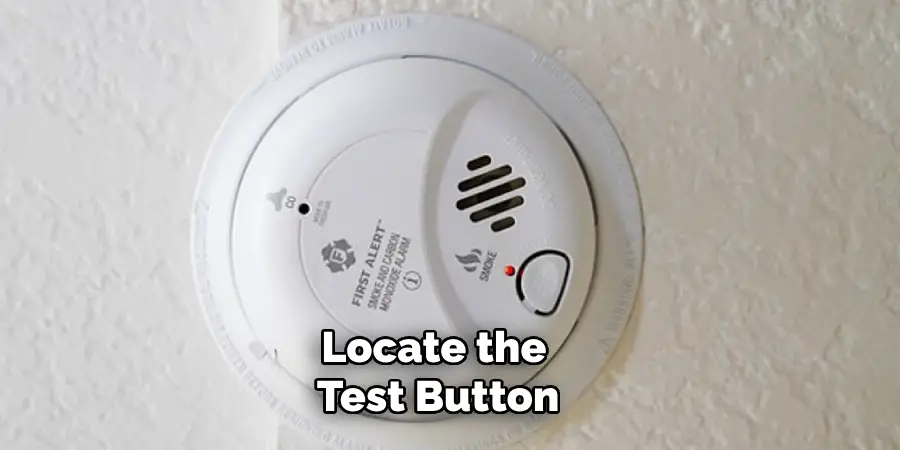
Most First Alert smoke alarms are equipped with a test button located on the front or side of the device. Identify the test button on your smoke alarm and ensure easy access for pressing it during the testing process. Familiarize yourself with the location of the test button to avoid confusion or difficulty when conducting regular tests.
3. Check Power Source:
Ensure that your First Alert smoke alarm is powered either by batteries or hardwired into your home’s electrical system. If the smoke alarm is battery-operated, verify that the batteries are installed correctly and have sufficient power. For hardwired smoke alarms, confirm that they are receiving power from the electrical circuit and have a backup battery installed, if applicable.
4. Notify Household Members:
Before testing your First Alert smoke alarm, inform household members or occupants about the testing process to avoid causing unnecessary alarm or confusion. Notify everyone in the household that you will be conducting a test to ensure they are aware of the sound and understand that it is only a test, not an actual emergency.
5. Press the Test Button:
Press and hold the test button on your First Alert smoke alarm for a few seconds to initiate the testing sequence. The alarm will emit a loud, continuous sound to indicate that it is functioning properly. Listen for the alarm sound to ensure it is loud and clear, indicating that the smoke alarm is capable of alerting occupants in the event of a fire.
6. Verify Response:
While the alarm is sounding, verify that the sound is audible throughout your home, including in all bedrooms, living areas, and hallways. If the alarm sound is faint or not heard in certain areas of the house, consider installing additional smoke alarms to ensure adequate coverage and early detection of smoke or fire.
7. Check Indicator Lights:
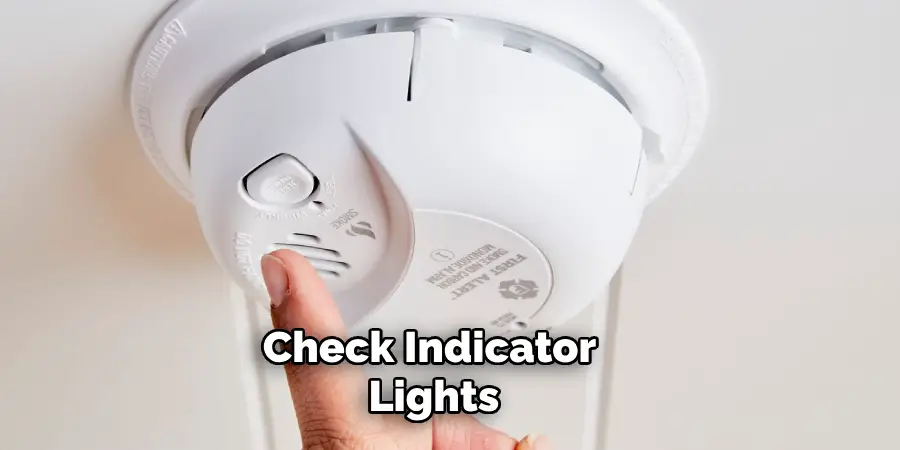
Some First Alert smoke alarms are equipped with visual indicator lights that illuminate during testing or in the event of a smoke detection. After pressing the test button, check for the presence of indicator lights on the smoke alarm to confirm that it is functioning correctly. The indicator lights may flash or remain steady to indicate different status conditions of the smoke alarm.
8. Test Multiple Smoke Alarms:
If your home is equipped with multiple First Alert smoke alarms, test each alarm individually to ensure that all units are operational. Press the test button on each smoke alarm sequentially, starting from the furthest point in your home and working your way toward the main living areas. Testing multiple smoke alarms ensures comprehensive coverage and early detection throughout your home.
9. Document Test Results:
Keep a record of each smoke alarm test, including the date, time, and any observations or notes about the testing process. Documenting test results allows you to track the frequency of testing and identify any patterns or trends in smoke alarm performance over time. Retain the documentation for reference and comparison during future tests and maintenance activities.
10. Perform Regular Testing:
Make it a habit to test your First Alert smoke alarms regularly, ideally once a month, to ensure their continued reliability and effectiveness. Establish a recurring schedule for testing and maintenance tasks to ensure they are performed consistently and proactively. Regular testing helps identify any issues or malfunctions promptly and allows you to take corrective action as needed to maintain optimal smoke alarm performance.
Troubleshooting and Common Issues
Encountering problems with your First Alert smoke alarm can be a cause for concern, but many issues are easily rectifiable with some basic troubleshooting steps. Here are some common issues and their solutions:
Smoke Alarm Beeping or Chirping
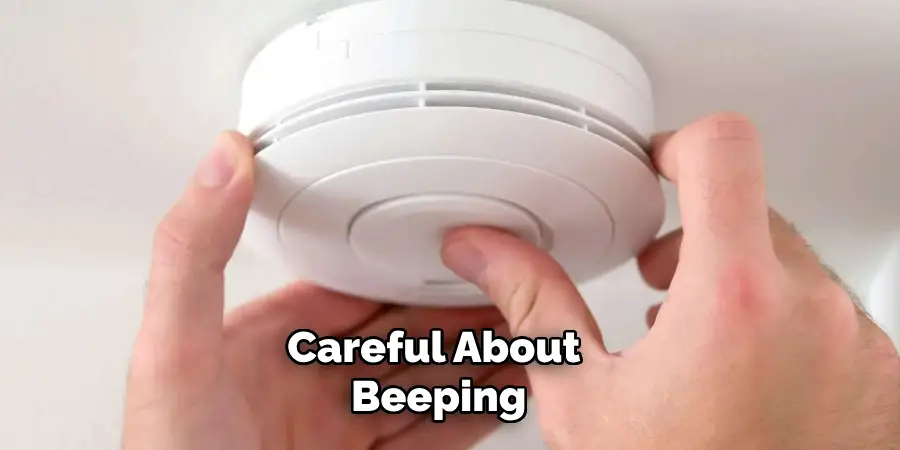
- Battery Replacement: A beeping or chirping sound often indicates that the battery is low and needs replacement. Ensure you use the recommended type of battery and install it correctly.
- Resetting the Device: Sometimes, the smoke alarm might need a reset to function correctly after a battery change. Remove the battery, press the test button for about 15 seconds to discharge any residual power, then reinstall the battery.
Smoke Alarm Does Not Test
- Power Source Check: Make sure the smoke alarm is properly connected to the power source. For battery-operated units, ensure the battery is inserted correctly and has charge. For hardwired units, verify the circuit breaker is on.
- Device Malfunction: If the smoke alarm still does not work after checking the power source, the device may be defective or near the end of its lifespan. Consider replacing the smoke alarm.
False Alarms
- Location: Ensure the smoke alarm is not located in areas prone to steam, high humidity, or cooking fumes, as these can trigger false alarms. Relocate the smoke alarm if necessary.
- Cleaning: Dust and debris can cause false alarms. Clean the smoke alarm with a soft brush attachment on a vacuum cleaner to remove any accumulated particles.
Continuous Alarm Sounding
- No Visible Smoke: If the smoke alarm sounds continuously without any visible signs of smoke, it may be overly sensitive or malfunctioning. Try resetting the alarm. If the issue persists, replace the unit.
- Environmental Factors: Check for environmental factors that might trigger the alarm, such as excessive dust, steam, or other aerosols. Remove the cause if possible or consider relocating the smoke alarm.
Remember, maintaining and troubleshooting your First Alert smoke alarm is essential for ensuring its efficacy in alerting you to potential dangers. Regular testing, maintenance, and timely resolution of any issues will help keep your smoke alarm in optimal working condition, contributing significantly to the safety and security of your home.
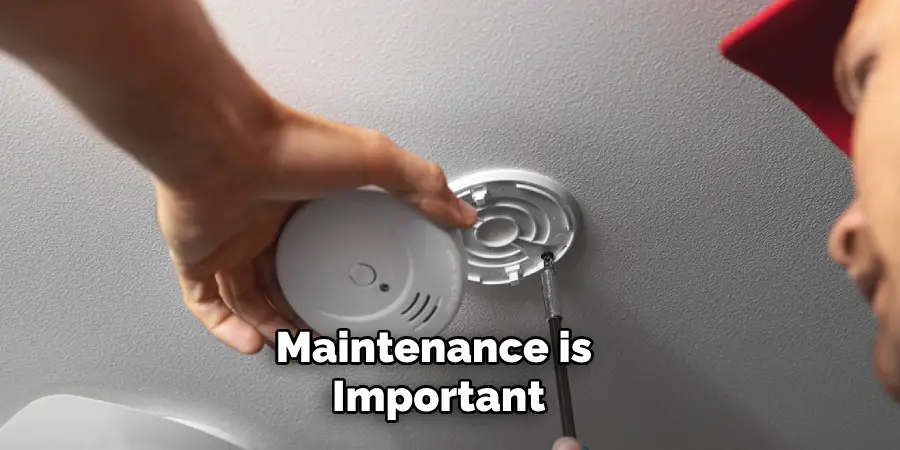
Conclusion
In conclusion, regular testing of your First Alert smoke alarm is paramount for ensuring the safety of your home and loved ones. By following the comprehensive testing procedures outlined in this guide, you can effectively assess the functionality of your smoke alarm and identify any potential issues.
Understanding the different alarm sounds and interpreting test results allows you to take appropriate action, whether it’s replacing batteries or addressing malfunctioning units promptly. Incorporating testing into your household safety routine and scheduling regular intervals for testing ensures the continued effectiveness of your smoke alarm in detecting smoke and alerting you to potential fire hazards.
By prioritizing the testing of your First Alert smoke alarm, you can have peace of mind knowing that your home is equipped with reliable fire detection technology. Thanks for reading our blog post on how to test first alert smoke alarm! We hope you found it helpful and informative.

